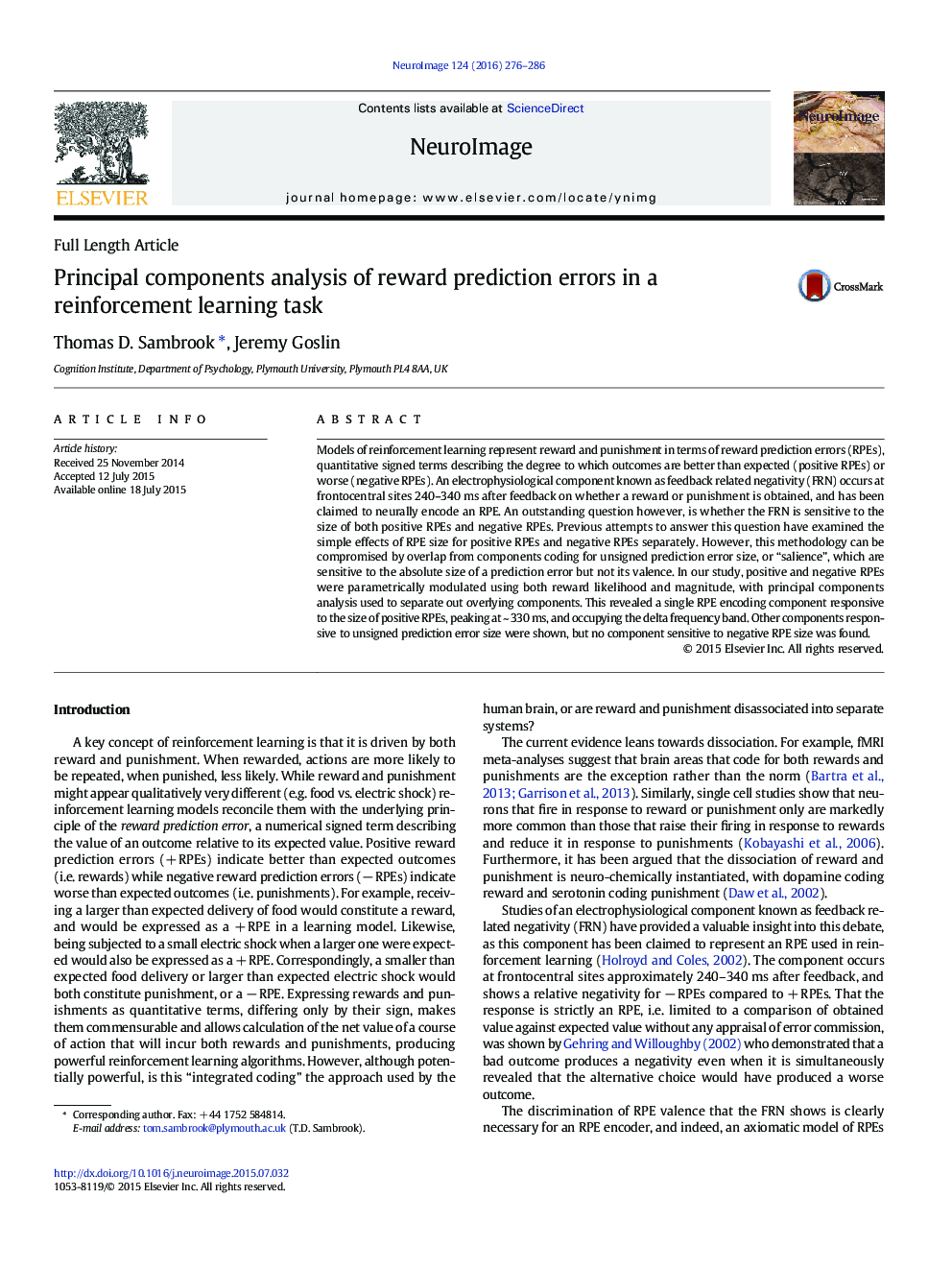| کد مقاله | کد نشریه | سال انتشار | مقاله انگلیسی | نسخه تمام متن |
|---|---|---|---|---|
| 6024270 | 1188658 | 2016 | 11 صفحه PDF | دانلود رایگان |
- An axiomatic model was used to identify a reward prediction encoder in the EEG.
- A design that systematically manipulated prediction error sign and size was employed.
- PCA revealed a reward prediction error encoding component in the timeframe of the FRN.
- This component was responsive to the size of positive reward prediction errors only.
- Numerous salience encoding components overlap this component.
Models of reinforcement learning represent reward and punishment in terms of reward prediction errors (RPEs), quantitative signed terms describing the degree to which outcomes are better than expected (positive RPEs) or worse (negative RPEs). An electrophysiological component known as feedback related negativity (FRN) occurs at frontocentral sites 240-340Â ms after feedback on whether a reward or punishment is obtained, and has been claimed to neurally encode an RPE. An outstanding question however, is whether the FRN is sensitive to the size of both positive RPEs and negative RPEs. Previous attempts to answer this question have examined the simple effects of RPE size for positive RPEs and negative RPEs separately. However, this methodology can be compromised by overlap from components coding for unsigned prediction error size, or “salience”, which are sensitive to the absolute size of a prediction error but not its valence. In our study, positive and negative RPEs were parametrically modulated using both reward likelihood and magnitude, with principal components analysis used to separate out overlying components. This revealed a single RPE encoding component responsive to the size of positive RPEs, peaking at ~Â 330Â ms, and occupying the delta frequency band. Other components responsive to unsigned prediction error size were shown, but no component sensitive to negative RPE size was found.
Journal: NeuroImage - Volume 124, Part A, 1 January 2016, Pages 276-286
